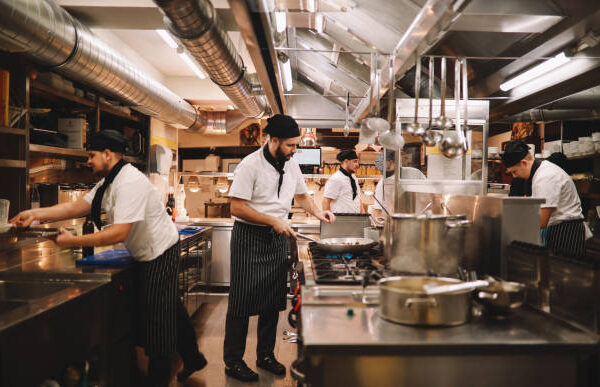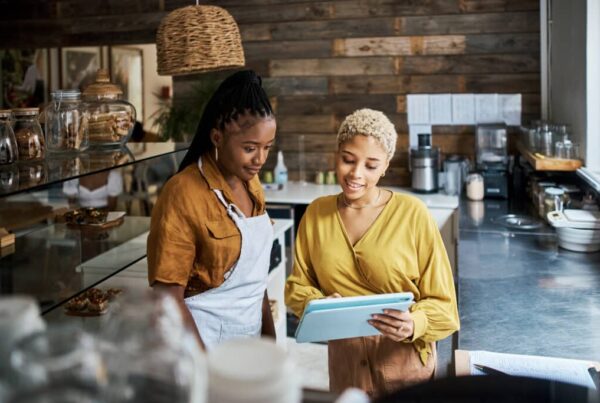When someone walks into a restaurant, they’re not just looking for food—they’re walking into an experience. From the moment the door opens, the setting, the lighting, the colors, even the noise levels all begin to shape how they feel and how they perceive the meal that’s coming. In fact, many customers make subconscious decisions about how much they’ll enjoy their visit before the first dish ever hits the table. That’s why design isn’t just a “nice-to-have” in restaurants; it’s a core ingredient in customer satisfaction and repeat business. Let’s explore how smart design choices can make a restaurant more appealing, more appetizing, and ultimately more successful.
Why Color Choices Matter More Than You Think
Color has the power to influence emotions and behavior. That’s not just a designer’s opinion—it’s backed by decades of research in psychology and marketing. In the restaurant world, the colors you choose for your walls, decor, and even menus can impact how hungry people feel, how long they want to stay, and how much money they’re willing to spend. Warmer shades like red, orange, and yellow tend to stimulate appetite and create a sense of urgency. They’re often found in fast food environments where the goal is to turn tables quickly. These tones can make people feel energized and more inclined to grab a bite and move along.
On the flip side, cooler tones like blue and green promote calmness and relaxation. While blue is not typically associated with food (since there are few naturally blue foods), it can be used strategically to create a tranquil setting. Green, on the other hand, often conveys freshness and health, making it a smart choice for cafes or restaurants that focus on organic or plant-based meals. Neutrals like beige, cream, and light browns can be versatile and welcoming, often used to create an upscale or cozy atmosphere. The trick is in knowing your brand and using color intentionally to support your identity and your goals.
Let’s Talk About Lighting
Lighting might be the most underestimated design element in restaurants. But make no mistake—bad lighting can ruin a good meal. Too bright, and the space feels cold or institutional. Too dim, and guests are squinting at their menus. The goal is to find that sweet spot that enhances the food, flatters the guests, and creates the mood you want. Warm, soft lighting tends to be the most flattering and comforting. It makes people look good, which makes them feel good. And when people feel good, they stay longer, spend more, and remember the experience positively.
Lighting also affects how food looks. Ever notice how everything in a well-lit food commercial looks delicious? That’s not an accident. The right lighting can make colors pop, textures shine, and details stand out. In restaurants, you can use this to your advantage. Highlight plates with focused lighting or hang pendant lights over tables to create visual interest. Task lighting in the kitchen ensures your staff can see what they’re doing, while ambient lighting in the dining area helps set the tone. For even more flexibility, consider dimmable lights that let you shift the mood from lunch to dinner with ease.
Don’t Forget the Power of Sound
Sound design isn’t always at the top of the to-do list during a restaurant buildout, but it should be. Think about it: you can have the perfect color palette and mood lighting, but if the noise level is off, it can throw the entire experience. Too much noise, and people can’t hear each other. Too little, and the room feels empty or awkward. There’s a balance to strike here, and it’s different for every type of restaurant.
Fast-casual or energetic spots might benefit from upbeat music and a bit of buzz. But if you’re running a fine dining establishment, guests will expect lower noise levels so they can enjoy conversation. Acoustic panels, cushioned seating, and even the materials used for flooring and walls can affect how sound travels. Music, of course, plays a role too. The tempo, genre, and volume can all influence how fast people eat, how long they stay, and how comfortable they feel. Choosing the right playlist and sound setup helps reinforce your brand vibe and keeps customers coming back.
Layout and Flow: It’s Not Just About Space
How your restaurant is laid out isn’t just about squeezing in as many tables as possible. It’s about crafting a journey—for your guests and your staff. From the moment someone walks in, the layout should guide them naturally through the space, from host stand to table to restrooms and back out the door. Poor layout can lead to awkward interactions, bottlenecks, or a feeling of crowding, all of which take away from the overall experience.
A smart layout takes both form and function into account. It ensures there’s enough space for waitstaff to move quickly and safely. It allows for private dining moments without making the space feel closed off. It offers a natural rhythm that supports different types of diners, whether they’re a couple on a date, a family with kids, or a solo guest with a laptop. Clear pathways and logical zones—like a waiting area, bar, dining section, and outdoor space—can make the experience feel seamless.
It’s also worth noting that the physical layout can impact sales. Tables with better lighting, comfortable seating, and views often get better reviews and larger checks. Table spacing can also influence turnover time. If guests feel too close to strangers, they may rush through their meal. Get it right, and your layout becomes a silent salesperson—encouraging longer stays and return visits.
The Hidden Role of Scent
While it might not be a design feature in the traditional sense, scent plays a powerful role in dining psychology. Smell is the sense most directly tied to memory and emotion. One whiff of something delicious cooking can instantly make a guest feel at home. But this goes beyond what’s coming from the kitchen. Some restaurants strategically diffuse certain scents to set the tone or even enhance appetite.
Imagine a bakery where the scent of fresh bread is intentionally released into the entrance area, creating a warm, welcoming vibe before customers even see the menu. Or a seafood restaurant that uses subtle citrus scents to keep the atmosphere fresh and appealing. Just like lighting and color, scent can be controlled to reinforce your brand and influence behavior. The key is subtlety—it should enhance the experience, not overpower it.
Texture and Materials: What You Feel Matters
The materials you choose—wood, stone, leather, metal, fabric—communicate a lot about your brand. They also affect how customers feel physically and emotionally while they dine. Soft materials like velvet or plush cushions suggest luxury and comfort. Harder surfaces like concrete or metal feel modern and edgy but can also make a space feel louder and colder.
Even the weight of the cutlery, the thickness of the napkins, and the feel of the chairs all contribute to the customer experience. These small details say, “We thought about you.” And when customers feel considered, they’re more likely to become loyal fans. The right blend of textures also adds visual interest and helps break up a space without relying on color or artwork alone.
Bringing It All Together: Cohesion Is Key
It’s not about nailing one design element—it’s about making them all work together. The most successful restaurants aren’t just pretty. They’re cohesive. Every choice—from the lighting to the chairs to the playlist—should reflect your brand, your food, and your desired customer experience. A rustic, family-style Italian eatery shouldn’t feel sleek and sterile. A modern sushi bar probably doesn’t need farmhouse tables. When every piece aligns with your concept, customers can feel it. They’re more comfortable, more impressed, and more likely to come back—and tell others.
Great design is invisible in the best way. It shouldn’t scream for attention. It should quietly support the experience, guiding guests through a story that’s told through senses and setting. When design psychology is done well, customers don’t leave saying, “That restaurant had nice lighting.” They leave saying, “That place just felt right.”
Why This Matters for Restaurateurs
Design isn’t an afterthought—it’s a revenue driver. It affects how long people stay, how much they spend, how often they return, and what kind of reviews they leave. If your layout is clunky, your lighting is harsh, and your chairs are uncomfortable, no amount of good food will save the experience. On the other hand, a thoughtfully designed space can make even a simple dish feel elevated and memorable.
Investing in psychology-driven design may seem like an extra cost at the outset, but it pays off in the long run. Happier guests become repeat customers. Better ambiance attracts more foot traffic. Smart flow makes staff more efficient. Every aspect of a successful restaurant is touched by design. The good news is, you don’t have to figure it all out on your own. With a partner like Restaurant Resolutions, we’ll help you build not just a restaurant, but an experience worth raving about.
Final Thoughts
Design is powerful. It’s the silent partner in every dining experience, shaping mood, appetite, and behavior in subtle but profound ways. Whether you’re opening a new restaurant or revamping an existing one, taking a strategic, psychology-backed approach to design can set you apart in a crowded market. People may come for the food, but they stay—and return—for the way it makes them feel. Make that feeling unforgettable.



